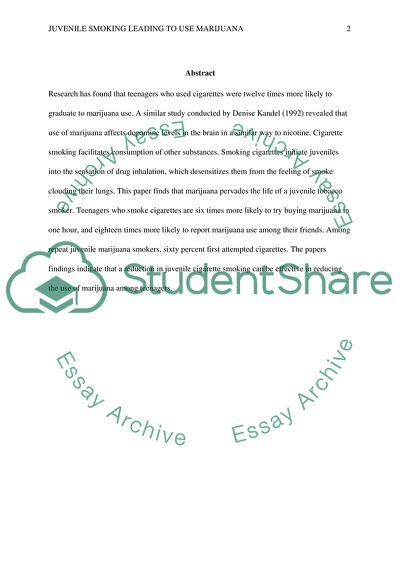Cite this document
(Juvenile Smoking Leading to Use of Marijuana - Research Methods for Criminal Justice Paper Example | Topics and Well Written Essays - 1500 words, n.d.)
Juvenile Smoking Leading to Use of Marijuana - Research Methods for Criminal Justice Paper Example | Topics and Well Written Essays - 1500 words. https://studentshare.org/sociology/1777167-juvenile-smoking-leading-to-use-marijuana-research-methods-for-criminal-justice
Juvenile Smoking Leading to Use of Marijuana - Research Methods for Criminal Justice Paper Example | Topics and Well Written Essays - 1500 words. https://studentshare.org/sociology/1777167-juvenile-smoking-leading-to-use-marijuana-research-methods-for-criminal-justice
(Juvenile Smoking Leading to Use of Marijuana - Research Methods for Criminal Justice Paper Example | Topics and Well Written Essays - 1500 Words)
Juvenile Smoking Leading to Use of Marijuana - Research Methods for Criminal Justice Paper Example | Topics and Well Written Essays - 1500 Words. https://studentshare.org/sociology/1777167-juvenile-smoking-leading-to-use-marijuana-research-methods-for-criminal-justice.
Juvenile Smoking Leading to Use of Marijuana - Research Methods for Criminal Justice Paper Example | Topics and Well Written Essays - 1500 Words. https://studentshare.org/sociology/1777167-juvenile-smoking-leading-to-use-marijuana-research-methods-for-criminal-justice.
“Juvenile Smoking Leading to Use of Marijuana - Research Methods for Criminal Justice Paper Example | Topics and Well Written Essays - 1500 Words”. https://studentshare.org/sociology/1777167-juvenile-smoking-leading-to-use-marijuana-research-methods-for-criminal-justice.


